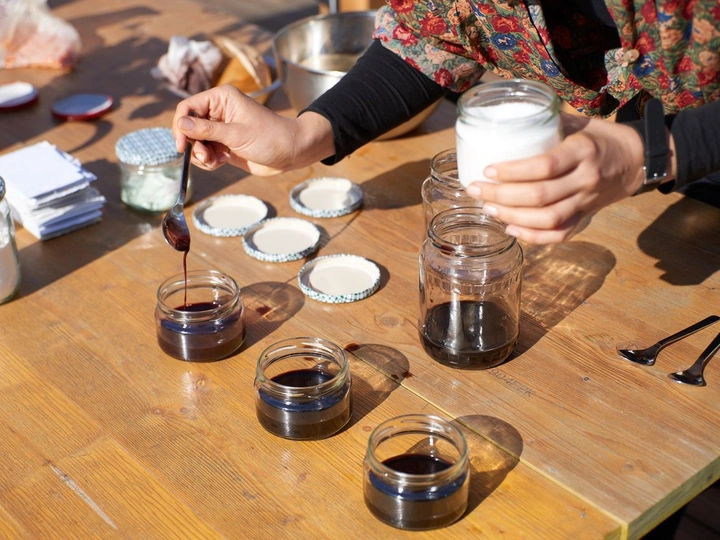Material Futures

Luma Vidal Weinhardt
Andreea Tron is a Romanian innovation designer and material researcher based in Zurich. With a background in architecture (BA and MSc) and a Master’s in Design from FHNW Basel, her practice explores how bioregional resources, ancestral craft knowledge, and ecological thinking can inform new ways of shaping materials, objects, and spaces. She works across biomaterials, experimental textiles, and circular systems, often using industrial byproducts and local resources to propose regenerative alternatives. From 2017 to 2022, she led Atelier Tron, a textile design studio focused on circular practices. She now continues independently, combining speculative design with hands-on experimentation. Andreea regularly exhibits her work and leads workshops on sustainable materials and craft methodologies. Her approach bridges nature, industry, and technology,opening space for collaborative, forward-thinking design grounded in place.
Luma Vidal Weinhardt is a Brazilian designer based in Basel, with a background in Economics and Industrial Design and a Master’s degree in Design from FHNW Basel. Her multidisciplinary practice bridges research, community engagement and material tinkering informed by experience across diverse industries. Luma focuses on bioregional and biobased materials and has engaged with repurposing textile and plastic waste. She investigates how local resources, cultural heritage, and industrial byproducts can inspire new ways of shaping spaces, objects, and systems. Rooted in sustainability, circularity, and social responsibility, her work bridges innovation and tradition, fostering collaborative connections between land, craft, and design. Luma is active in design associations, supporting community-led initiatives and shaping narratives around collective learning and material experimentation.
Our collaborative practice engages the material essence of place through a non-extractive approach spanning design, spatial practices, and material research. We work across urban and rural bioregions to investigate how vernacular, residual, and overlooked materials can inform creative processes, rethinking design in response to local conditions rather than imposed systems. Grounded in ecological accountability and contextual awareness, we approach materials as active agents with spatial, cultural, and symbolic significance.
In response to extractive production models in architecture and design, we ask: what materials are already present (wasted, forgotten, or undervalued) and how might they be recomposed, reactivated, or reimagined? These materials carry untapped structural, aesthetic, and sensorial qualities. Our practice engages with material culture, land heritage, and craftsmanship, drawing on traditional knowledge and techniques to inform contemporary design.
Our process follows a cyclical, adaptive methodology that shifts with each context. It begins with a situated investigation of place, tracing material histories, ecological patterns, and working with local industries, craftspeople, and communities to uncover underused flows. We then dismantle, reconfigure, and test materials such as clay, agricultural residues, slag, and textile waste. These experiments lead to contextual interventions: temporary structures, objects, or collaborative actions that prototype new material narratives.
Finally, we share the process through lectures, workshops, exhibitions, and making sessions that foster reflection, exchange, and collective imagining of alternative design futures.
We propose a context-based material practice rooted in research and making. Outcomes may include prototypes, installations, or workshops demonstrating regenerative alternatives to extractive systems through land-conscious, heritage-informed, and materially sensitive experimentation.